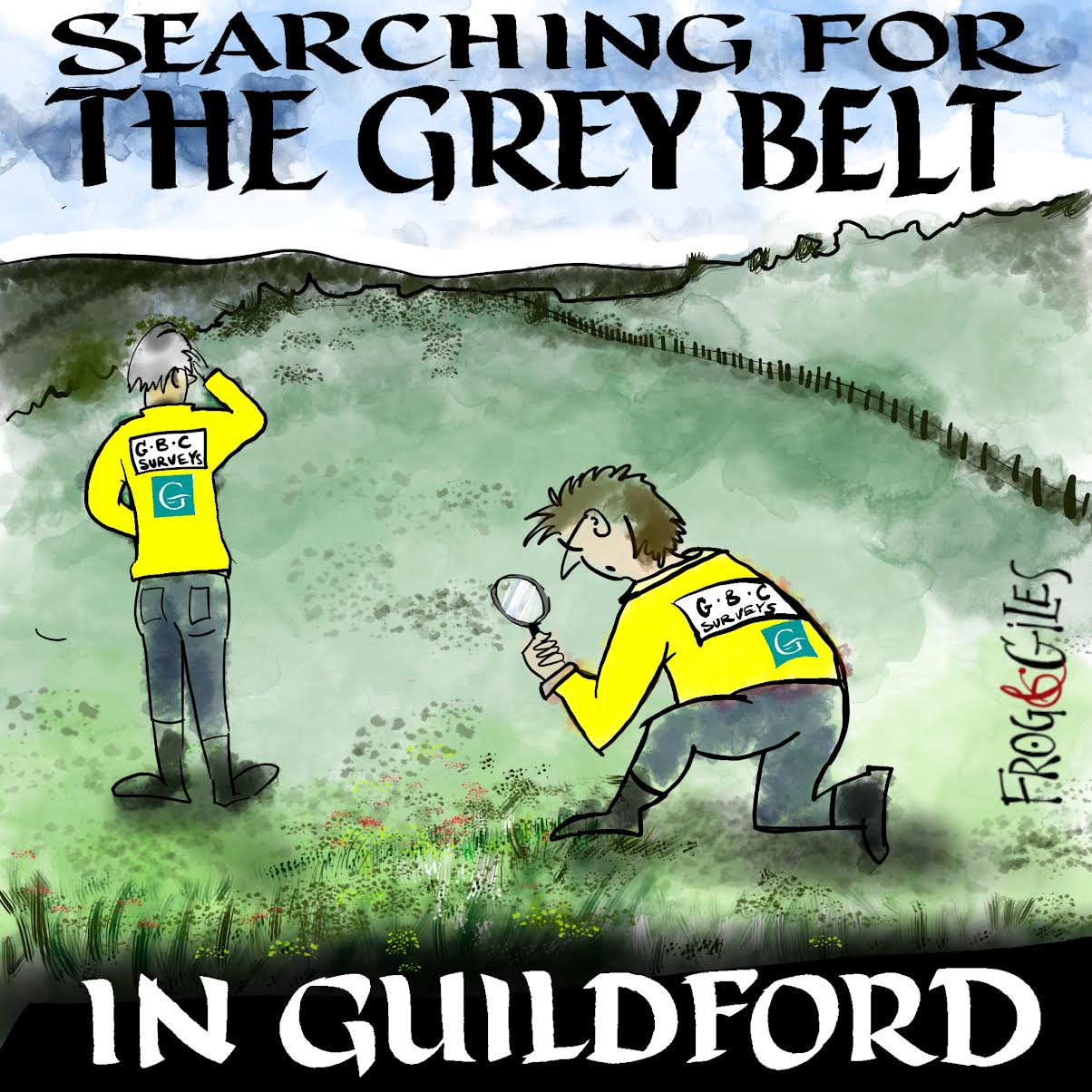 Abraham Lincoln
If given the truth, the people can be depended upon to meet any national crisis...
Abraham Lincoln
If given the truth, the people can be depended upon to meet any national crisis...
 Guildford news...
for Guildford people, brought to you by Guildford reporters - Guildford's own news service
Guildford news...
for Guildford people, brought to you by Guildford reporters - Guildford's own news service
Letter: Dutch Roundabout – We Should Not Let ‘the Best Be the Enemy of the Good’
Published on: 26 Dec, 2022
Updated on: 26 Dec, 2022
In response to: Those Considering the London Road Scheme Should Be Aware of Dutch Roundabout Proposal
France used to operate roundabouts such that traffic entering had priority over traffic circulating. Gradually they transitioned to the UK/rest of the world style, though had, or may still have, some with the former priority and the expected hazardous consequences to those unaware.
Dutch-style roundabouts have introduced a mix of priorities for a mix of traffic, sometimes requiring looking right, sometimes looking left, and, regrettably, until they become the norm there will be an increased number of accidents.
The highly-publicised Dutch roundabout in Cambridge shows five accidents (two serious) in the period 2020/21 whilst the Burpham roundabout has just one (source: crashmap.co.uk).
Yes, pedestrians and cyclists now have priority over vehicles, but until everyone is familiar or adequately trained the inevitable outcome is that the squidgy combatant will always suffer more than the metallic (and faster-moving) one.
Be very careful what you wish for and remember what Voltaire said: “the best is the enemy of the good”.
Responses to Letter: Dutch Roundabout – We Should Not Let ‘the Best Be the Enemy of the Good’
Leave a Comment Cancel replyPlease see our comments policy. All comments are moderated and may take time to appear. Full names, or at least initial and surname, must be given.

"Found any?" - "Nope, it all looks green to me!" (See Opinion: The Future is Congested, the Future is Grey)




Recent Articles
- Sara Sharif Trial Latest – Defence Says Sara’s Uncle ‘Facing Murder Count on Absolutely Nothing’
- Ash Level Crossing Row: GBC Rejects Cabinet Member’s Statement As ‘Factually Incorrect’
- Letter: What Will Be Done for Burpham Residents Now?
- County Council Cabinet Confirms Its Decision on London Road Scheme
- Postcode Lottery Police Funding – It ‘Cannot Be Fair’ Says Police Commissioner
- Heartbreak for City Again as Two Extra-time Goals Snatch Victory
- Letter: All Three Major National Parties Are Relaxed About Green Belt Giveaways
- Updated: Ash Level Crossing Decision ‘Was Made Without Approval of Surrey Highways’
- Dragon Interview: Julia McShane leader of GBC’s Lib Dems
- Letter: Ash Bridge – We Need Accountability and Competence


Recent Comments
- Brian Holt on Heartbreak for City Again as Two Extra-time Goals Snatch Victory
- Helen Skinner on County Council Cabinet Confirms Its Decision on London Road Scheme
- John Oliver on County Council Cabinet Confirms Its Decision on London Road Scheme
- John Ferns on Ash Level Crossing Row: GBC Rejects Cabinet Member’s Statement As ‘Factually Incorrect’
- Jim Allen on County Council Cabinet Confirms Its Decision on London Road Scheme
- Olly Azad on Heartbreak for City Again as Two Extra-time Goals Snatch Victory
Search in Site
Media Gallery
Dragon Interview: Local Artist Leaves Her Mark At One of England’s Most Historic Buildings
January 21, 2023 / No Comment / Read MoreDragon Interview: Lib Dem Planning Chair: ‘Current Policy Doesn’t Work for Local People’
January 19, 2023 / No Comment / Read MoreA3 Tunnel in Guildford ‘Necessary’ for New Homes, Says Guildford’s MP
January 10, 2023 / No Comment / Read More‘Madness’ for London Road Scheme to Go Ahead Against ‘Huge Opposition’, Says SCC Leader
January 6, 2023 / No Comment / Read MoreCouncillor’s Son Starts Campaign for More Consultation on North Street Plan
December 30, 2022 / No Comment / Read MoreCounty Council Climbs Down Over London Road Works – Further ‘Engagement’ Period Announced
December 14, 2022 / No Comment / Read MoreDragon Interview: GBC Reaction to the Government’s Expected Decision to Relax Housing Targets
December 7, 2022 / No Comment / Read MoreHow Can Our Town Centre Businesses Recover? Watch the Shop Front Debate
May 18, 2020 / No Comment / Read More







Bibhas Neogi
December 27, 2022 at 9:27 am
Every country follows certain standards and codes of practices developed over the years to suit its condition of roads, traffic and volumes. To pick something that works in another country without evaluating its consequences can have disastrous consequences.
I find this Dutch roundabout design quite bizarre. I am not a traffic engineer but I have some highway engineering experience.
The purpose of a roundabout is to allow freer flow of traffic without having the control of traffic lights. Pedestrian crossings are set back from the junctions preferably beyond the flares to reduce the length of the crossings. By allowing at least room for two or three cars to leave the roundabout and have a safe forward sightline to the approach of the crossing and also not obstruct the flow of traffic going around in the roundabout. The UK design standard TD 16 gives the guidelines for the design of roundabouts. The Dutch version is totally non-compliant.
I suppose the Dutch version works for lighter traffic but it would be unsafe for higher volumes. It is likely to block the circulation and it is therefore inefficient and would possibly cause accidents due to driver frustration.
A better design would be to keep the pedestrian crossings set back from the periphery of the roundabout but sink the 2.0m wide circular cycle route about, say, 2.3 m below the roundabout level. This arrangement would create a grade-separated cycle lane at the roundabout. The pedestrian crossings, if they were not far enough away from circular cycle lane, would also span across the exit and entry cycle lanes that are about 2.0m wide, as would the road pavements over the circular cycle lane.
The Department for Transport needs to evaluate such modifications for roundabouts and those suggested here by me and revise their guidance as necessary before such designs could be used in the UK. County councils generally follow the national standards and I am a bit surprised that such roundabouts have been constructed without the relevant changes in our national standards. It has legal implications as road signs and road markings are standard as per Highways Manual – https://www.gov.uk/government/publications/traffic-signs-manual.
Modal shift is desirable but geometry at the roundabouts has to be such that it does not compromise safety of road users. SCC should try imposing a 20-mph speed limit for a start to improve safety where there are schools and other inadequacies that need addressing.